USS Mineral County (LST-988) was an LST-542-class tank landing ship built for the United States Navy during World War II. Named after Mineral County, West Virginia, she was the only U.S. Naval vessel to bear the name.

USS Marion County (LST-975) was an LST-542-class tank landing ship built for the United States Navy during World War II. Like many of her class, she was not named and is properly referred to by her hull designation. She was later named after counties in seventeen U.S. states, she was the only US Naval vessel to bear the name.

USS LST-209 was an LST-1-class tank landing ship built for the United States Navy during World War II. Like most of the ships of her class, she was not originally named, and known only by her designation. From June to August 1951 she served a stint as a part of the Military Sea Transportation Service (MSTS), manned by a civilian crew, and renamed USNS T-LST-209. She was recommissioned under her original name 24 August 1951, and renamed USS Bamberg County (LST-209) on 1 July 1955. She was named for Bamberg County, South Carolina, the only U.S. Naval vessel to bear the name.

USS Benzie County (LST-266) was an LST-1-class tank landing ship built for the United States Navy during World War II. Named for Benzie County, Michigan, she was the only U.S. Naval vessel to bear the name.

USS Berkeley County (LST-279) was an LST-1-class tank landing ship built for the United States Navy during World War II. Named for counties in South Carolina and West Virginia, she was the only U.S. Naval vessel to bear the name.
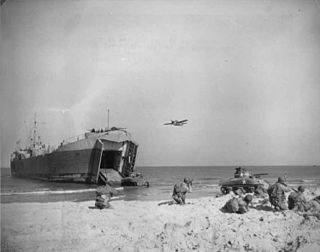
USS Berkshire County (LST-288) was an LST-1-class tank landing ship built for the United States Navy during World War II. Named for Berkshire County, Massachusetts, she was the only U.S. naval vessel to bear the name.

USS Bernalillo County (LST-306) was an LST-1-class tank landing ship built for the United States Navy during World War II. Named for Bernalillo County, New Mexico, she was the only U.S. Naval vessel to bear the name.

USS LST-356 was an LST-1-class tank landing ship built for the United States Navy during World War II. She earned three battle stars during the war and was decommissioned in July 1946. In July 1955, she was assigned the name USS Bledsoe County (LST-356) in honor of Bledsoe County, Tennessee, but never saw active service under that name. Bledsoe County was struck from the Naval Vessel Register in September 1960 and sold for scrapping in March 1961. She was apparently sold into commercial service in 1962 instead, serving under several names over the next five years. In 1967, she was acquired by the Indonesian Navy and renamed KRI Teluk Tomini (508). In 2012, the ship was decommissioned and scrapped.
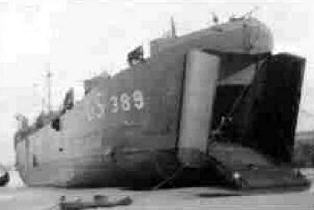
USS Boone County (LST-389) was an LST-1-class tank landing ship built for the United States Navy during World War II. Named for counties in Arkansas, Illinois, Indiana, Iowa, Kentucky, Missouri, Nebraska, and West Virginia, she was the only U.S. Naval vessel to bear the name.

USS Middlesex County (LST-983) was an LST-542-class tank landing ship built for the United States Navy during World War II. Named after counties in Connecticut, Massachusetts, New Jersey, and Virginia, she was the only U.S. Naval vessel to bear the name.

USS Jerome County (LST-848) was an LST-542-class tank landing ship built for the United States Navy during World War II. Named after Jerome County, Idaho, she was the only U.S. Naval vessel to bear the name.
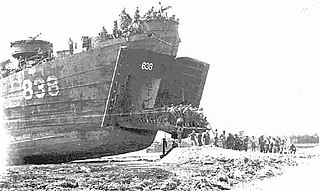
USS Hunterdon County (LST-838) was an LST-542-class tank landing ship built for the United States Navy during World War II, and later reconfigured and recommissioned for riverine warfare during the Vietnam War. Named after Hunterdon County, New Jersey, she was the only U.S. Naval vessel to bear the name.

USS Pitkin County (LST-1082) was an LST-542-class tank landing ship built for the United States Navy during World War II. Named after Pitkin County, Colorado, she was the only U.S. Naval Vessel to bear the name.
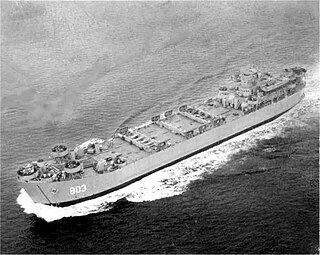
The USS Hampden County (LST-803) was an LST-542-class tank landing ship built for the United States Navy during World War II. Named after Hampden County, Massachusetts, she was the only U.S. Naval vessel to bear the name.
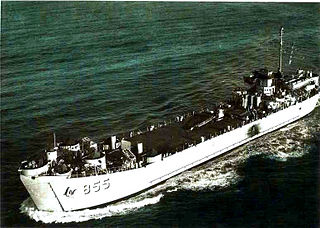
USS Kent County (LST-855) was an LST-542-class tank landing ship built for the United States Navy during World War II. Named after counties in Delaware, Maryland, Michigan, Rhode Island, and Texas, she was the only U.S. Naval vessel to bear the name.
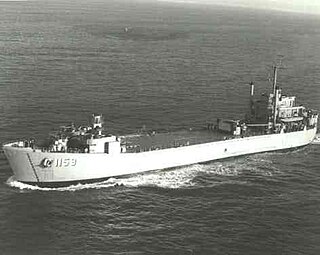
USS Tom Green County (LST-1159) was a Terrebonne Parish-class tank landing ship built for the United States Navy at the tail end of the Korean War. Named for Tom Green County, Texas, she is the only U.S. Naval vessel to have borne that name. She was subsequently transferred to Spain, where she served in the Spanish Navy as Conde de Venadito (L-13).

USS Litchfield County (LST-901) was a LST-542-class tank landing ship built for the United States Navy during World War II. Named after Litchfield County, Connecticut, she was the only U.S. Naval vessel to bear the name.

USS Mahnomen County (LST-912) was an LST-542-class tank landing ship built for the United States Navy during World War II. Like many of her class, she was not named and is properly referred to by her hull designation. She was later named after Mahnomen County, Minnesota, and was the only US Navy vessel to bear the name.

USS Wexford County (LST-1168), previously USS LST-1168, was a United States Navy landing ship tank (LST) in commission from 1953 to 1971, which saw service in the Atlantic, Caribbean, and Pacific and served in the Vietnam War..
USS LST-371 was a LST-1-class tank landing ship used by the United States Navy.





















